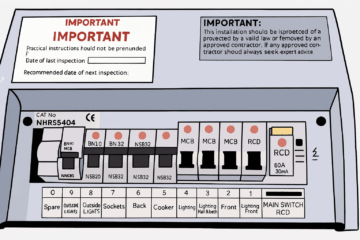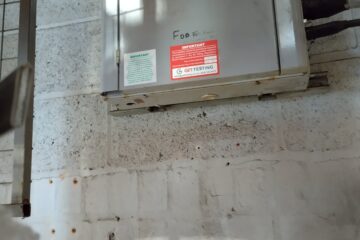If you’ve ever had an Electrical Installation Condition Report (EICR) done, you’ll know the final report contains codes. These codes are used to show the severity of any problems found during the inspection.
Understanding these EICR codes is crucial, because they tell you which issues need immediate attention and which are advisory. If you’re unsure how long your current report will remain valid, see our guide to EICR validity periods.
In this post, we’ll explain what each EICR code means, why they matter, and what you need to do next.
Why Are EICR Codes Important?
An EICR is a detailed check of your building’s fixed wiring – distribution boards, sockets, lighting circuits and other fixed electrical installations.
The electrician then issues a report which uses a coding system to grade the condition of the installation.
These codes let you know:
- Whether your electrics are safe to continue using
- If remedial work is required, and how urgently
- Whether your report will be marked “Satisfactory” or “Unsatisfactory”
The Four EICR Codes
C1 – Danger Present
- What it means: There is an immediate risk of injury.
- Action required: The electrician must either make it safe immediately or isolate the circuit.
- Examples:
- Exposed live wires
- Missing cover on a consumer unit
- Signs of burning or overheating
A C1 automatically results in an Unsatisfactory report.
C2 – Potentially Dangerous
- What it means: No immediate danger, but the fault could become dangerous if left unaddressed.
- Action required: Urgent remedial work is required, but not necessarily on the day.
- Examples:
- No RCD protection on socket circuits where required
- Damaged insulation that isn’t yet exposing live parts
A C2 also makes the overall report Unsatisfactory.
C3 – Improvement Recommended
- What it means: The installation is safe to use, but there is room for improvement to bring it in line with the latest standards.
- Action required: No legal obligation to fix immediately, but recommended.
- Examples:
- Old consumer unit that doesn’t meet current regulations but is still safe
- Minor labelling issues
A C3 alone does not make the report Unsatisfactory.
FI – Further Investigation
- What it means: Something has been found that requires more investigation before the electrician can confirm if it’s safe or not.
- Action required: Investigate as soon as possible.
- Examples:
- Circuit behaviour that can’t be explained without opening up more of the installation
- Signs of a hidden fault in buried wiring
An FI code results in an Unsatisfactory report until the investigation is carried out.
What Happens If You Get an Unsatisfactory EICR?
If your report has C1, C2, or FI codes, it will be classed as Unsatisfactory.
- For landlords: You must carry out remedial work within 28 days (or sooner if stated) and provide written confirmation that the work has been completed.
- For businesses: Urgent remedial work should be done promptly to ensure compliance with the Electricity at Work Regulations.
- For homeowners: You should arrange repairs as soon as possible for safety.
Once the work is done, the electrician will issue a satisfactory EICR or a confirmation of remedial works. If you’re looking to budget for this stage, see our guide to EICR costs.
Key Takeaways – EICR Codes at a Glance
- C1: Danger present – fix immediately
- C2: Potentially dangerous – urgent repairs needed
- C3: Improvement recommended – safe for now, but worth upgrading
- FI: Further investigation required – not safe until confirmed
Understanding these codes helps you act quickly, keep people safe, and stay compliant with legal obligations.
Need an EICR or Advice on Your Report?
If you’re looking for a quote or advice on remedial works, just send us a copy of your EICR. We’ll review the findings, explain what the codes mean, and give you clear options for putting things right – whether that’s urgent repairs or planned upgrades.




0 Comments